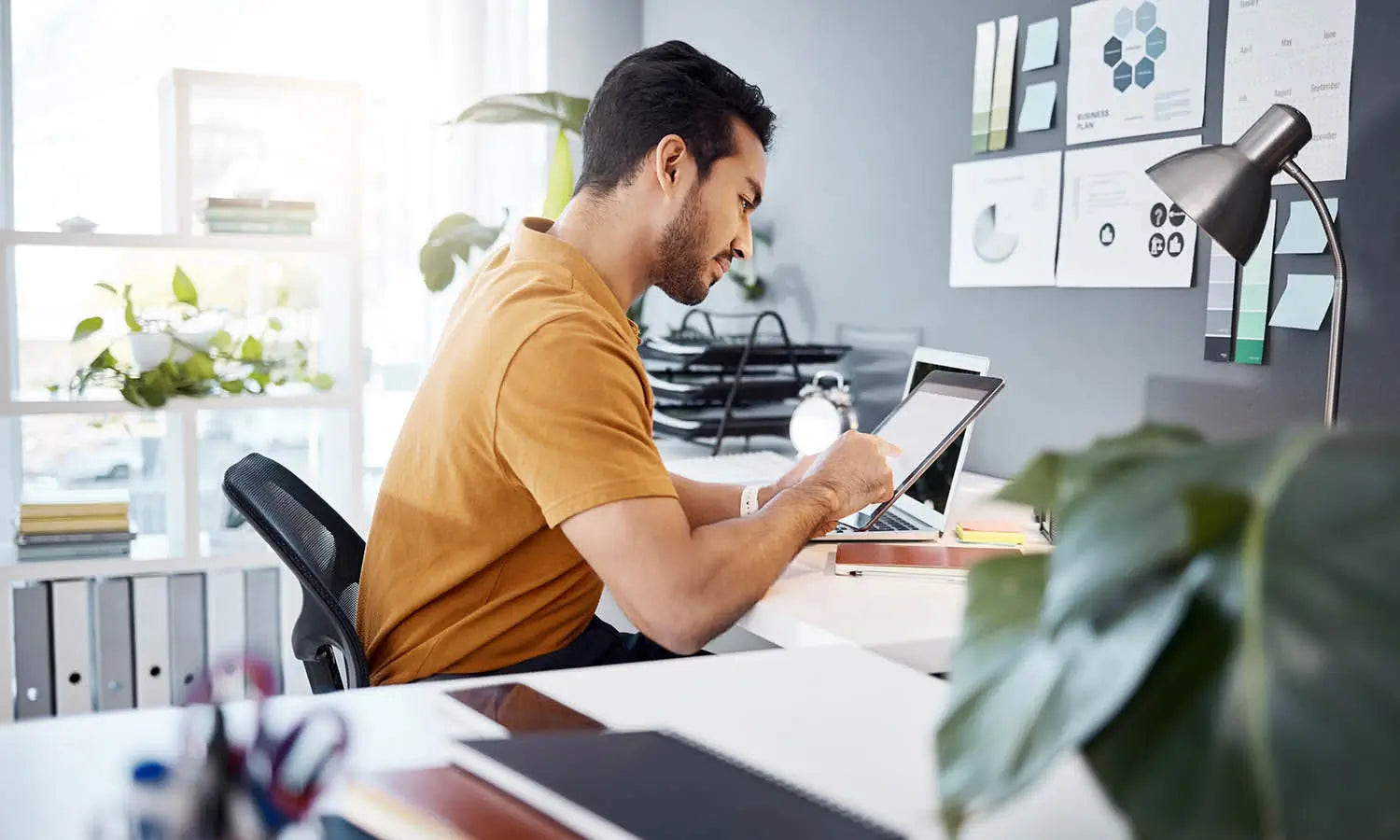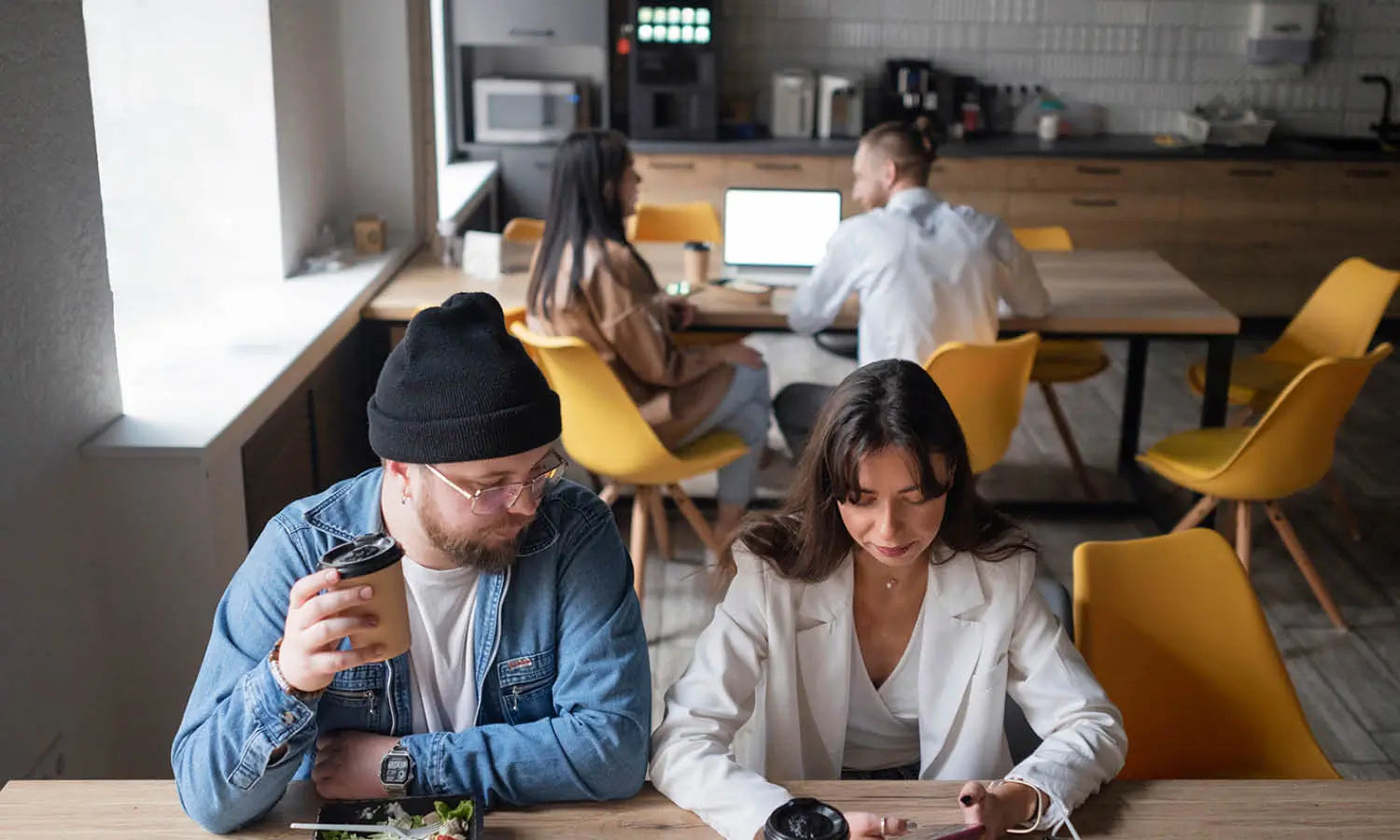How To Recreate A Logo Design Legally & Safely

Source: Rafael Silveira, Mustache DJ/Brand Identity, Behance, https://www.behance.net/gallery/170788209/Mustache-DJ-Brand-Identity
Recreating a logo design poses unique challenges and opportunities for designers. In today's visually driven market, a logo not only serves as a brand's identity but also as a pivotal marketing tool. However, when it comes to recreating an existing logo, whether for updating the design or adapting it for new uses, it is crucial to navigate the process with a clear understanding of both creative and legal considerations. This ensures that the new logo respects original artistic rights and avoids potential legal pitfalls.
By focusing on innovation and adhering to legal standards, designers can transform an existing logo into something fresh and exciting while maintaining compliance with copyright laws. This article will guide you through the essential steps to recreate a logo design legally and safely, providing you with the necessary tools to ensure your design process is both creative and compliant. As the landscape of intellectual property continues to evolve, staying informed and cautious is key to a successful logo recreation.
Understand Copyright Law
When you set out to recreate a logo design, the first crucial step is understanding the copyright law surrounding the original artwork. Copyright protects literary and artistic works, including logos, automatically from the moment of their creation. This means that the original logo's design is likely protected, making unauthorized use potentially subject to legal action. It's important to note that copyright does not protect ideas, concepts, or techniques, but the expression of those ideas. Therefore, when recreating a logo, you must create a new original expression that is significantly different from the original to avoid infringement.
Familiarizing yourself with the specifics of copyright law can help you distinguish between mere inspiration and direct copying. You should also be aware of the terms "fair use" and "parody," which allow limited use of copyrighted material under certain circumstances, though these are often complex and context-dependent. Consulting with a copyright attorney might be advisable to navigate these waters safely when planning to recreate a logo design.
Research the Logo’s Status
Before beginning any logo recreation project, it’s imperative to research the original logo’s copyright and trademark status. This can be accomplished through searches in trademark databases, such as the United States Patent and Trademark Office (USPTO) or the World Intellectual Property Organization (WIPO). These databases provide information about registered trademarks, including the logo in question, which will tell you if the logo is protected under trademark law. Trademarks protect symbols, names, and logos used in commerce that distinguish goods or services of one entity from those of another.
Understanding the extent of trademark protection can help you determine how closely your new design can resemble the original. Additionally, if the logo is trademarked, consider the geographical scope of the registration—whether it’s national, regional, or international—as it affects where and how the logo can be legally used. If the trademark has expired or was never renewed, the design may no longer be protected, opening up more possibilities for your recreation. Nonetheless, due diligence in this phase is essential to ensure that your redesigned logo design avoids legal complications.
Seek Permission from the Owner
When recreating a logo design, one of the most straightforward ways to mitigate legal risks is to seek permission from the original logo's owner. Obtaining permission involves contacting the owner or the entity that holds the copyright and requesting the right to use or modify the logo. This process not only clarifies any potential legal restrictions but also establishes a formal agreement that can protect both parties' interests. When drafting your request, be specific about how you intend to use the recreated logo and the extent of the changes you plan to make. It’s advisable to have this permission in writing, whether through a formal license or a simple agreement, to avoid any misunderstandings.
This written permission should outline the scope of the use, any financial arrangements, and the duration of the agreement. In some cases, logo owners may require a fee for the usage rights, or they might grant them freely, especially if the recreated logo will be used in a way that benefits the original brand. If the owner denies permission, you must respect their decision and consider alternative creative directions. Securing permission not only ensures legal compliance but also maintains professional integrity in the field of logo design.

Use the Logo for Inspiration, Not Imitation
Recreating a logo provides an opportunity to bring fresh creativity into play. Rather than merely copying the existing design, use the original logo as a springboard for inspiration. This approach allows you to infuse new life and contemporary style into the logo while ensuring that the recreated version stands apart legally and creatively. Start by identifying the core elements that make the original logo effective—such as its color palette, typography, and symbolic elements—and think about how these can be adapted or enhanced to suit current trends and the client’s current needs. Introducing new design elements or tweaking the logo’s layout can create a connection to the original while making the new logo distinct and modern.
For instance, if the original logo uses a particular shape or symbol, consider how you can reinterpret these elements in a way that retains the brand's essence but also makes it unmistakably unique. This method not only helps avoid legal pitfalls associated with direct copying but also pushes you as a designer to innovate and think critically about what makes a logo successful. In the end, your goal is to deliver a logo that resonates with audiences today while respecting the legacy of the original design.
Alter Significant Elements
In the process of recreating a logo design, altering significant elements is essential to ensure both legality and creativity. This approach involves changing major aspects of the original design such as its color scheme, typography, and visual components. For instance, if the original logo features a specific set of colors, consider using a different palette that reflects the brand’s current ethos or market trends. Similarly, typography can be updated with new fonts that are either more modern or better aligned with the brand's identity. Graphic elements should also be reevaluated; for example, if the original logo includes a symbol or icon, think about redesigning it in a way that retains its recognizability but also adds a fresh twist.
These changes not only help in differentiating the new logo from its predecessor but also enhance its relevance in the contemporary market. By focusing on altering these significant elements, you ensure that the recreated logo stands out as a new and original work, thus minimizing the risk of copyright infringement. This creative reinvention not only adheres to legal standards but also demonstrates your capability as a designer to innovate within the bounds of existing works.
Maintain Distinctiveness
Maintaining distinctiveness in a recreated logo is crucial for establishing a separate identity from the original while avoiding potential legal issues. This involves creating a design that is recognizably different and does not confuse the market. To ensure distinctiveness, focus on unique design approaches that reflect the brand’s updated vision or target audience. It’s important to analyze the original logo’s brand recognition factors and decide which elements are essential for retaining brand continuity and which can be transformed to create a fresh identity.
Distinctiveness can be achieved through innovative layout changes, adding new graphic elements, or incorporating modern design trends that resonate with today's consumers. For example, if the original logo is minimalist, consider adding dynamic elements or a more vibrant color scheme to set the new design apart. Alternatively, simplifying an overly complex logo can also provide a unique and updated look. This strategy not only helps in differentiating the new logo from the original but also aids in establishing a strong and independent brand presence in the competitive market. The goal is to craft a logo that captures the essence of the brand while ensuring it is perceived as a new and distinct entity.
Review Industry Standards
As a professional designer, it's imperative to stay aligned with industry standards when recreating a logo design. This not only ensures that your work remains professional and credible but also minimizes legal risks associated with copyright infringement. Familiarize yourself with the latest trends and guidelines in graphic design to understand what has been deemed acceptable and innovative within the industry. This includes studying award-winning logo designs, attending design conferences, and engaging with other professionals in the field.
By understanding industry standards, you can gauge how far you can push the boundaries of creativity while still maintaining a respectful distance from existing designs. It’s also beneficial to keep abreast of the ethical guidelines proposed by professional design associations which advocate for originality and respect towards intellectual property. Adhering to these standards can also help in reinforcing your reputation as a designer who not only values creativity but also respects the legal and ethical aspects of design.
Moreover, being familiar with industry benchmarks will assist you in creating a logo that is not only unique and fresh but also competitive within the market, ensuring that your recreated logo stands out for all the right reasons.

Source: Irfan Khatri, Rearo Brand Identity, Behance, https://www.behance.net/gallery/169294847/Rearo-Brand-Identity
Test the Logo with Focus Groups
Testing the recreated logo with focus groups is an essential step in the design process, providing valuable insights into public perception and the effectiveness of the logo in communicating the intended brand message. This process involves presenting the new logo to a diverse group of people who resemble the target audience to gather their feedback on various aspects of the design, such as its appeal, clarity, and relevance. Utilizing focus groups allows you to understand how the logo is perceived from outside the design bubble, potentially highlighting unforeseen issues or interpretations.
It’s important to ask specific questions that help evaluate the distinctiveness of the logo as well as its connection to the brand identity. For instance, you might want to find out if the logo effectively communicates the brand’s values or if it reminds them of any other logos, which could indicate a lack of originality. The feedback collected from these sessions can be incredibly beneficial for tweaking the design before it goes public, ensuring that it not only meets the client’s needs but also resonates well with the intended audience.
Register the New Design
Once you have successfully recreated a logo and ensured it is distinctive and legally compliant, the next step is to consider registering the new design as a trademark. This registration provides legal protection against unauthorized use and helps to establish the logo as the unique identifier of the brand. To start the registration process, conduct a thorough search to ensure that the new logo does not infringe on existing trademarks. This can be done through national or international trademark databases.
After confirming its uniqueness, submit a trademark application to the relevant intellectual property office, which may vary depending on the geographical scope you seek protection in. The application should include a clear representation of the logo, a list of goods or services it will represent, and any applicable fees. It’s important to be aware that trademark rights are territorial, meaning that they only protect the logo in the jurisdictions where they are registered.
Once the application is submitted, it will be reviewed for any conflicts or issues, which can take several months. If approved, the trademark will provide your client with the exclusive rights to use the logo in commerce, which is crucial for maintaining the brand’s identity and value. Registering a logo not only secures its legal protections but also enhances the brand's credibility in the market.
Educate Clients about IP Considerations
As a professional designer specializing in logo recreation, it is crucial to educate your clients about intellectual property (IP) considerations. This education should cover the importance of adhering to copyright and trademark laws when recreating and using a new logo. Explain to clients that while the creative process allows for inspiration from existing designs, the final product must be a distinctive creation to avoid legal complications. Discuss the potential risks of copyright and trademark infringement, which can lead to legal disputes and financial liabilities. Additionally, emphasize the benefits of registering the new logo as a trademark, which provides legal protection against unauthorized use and solidifies the brand's identity in the marketplace. It’s also helpful to inform clients about the process of obtaining permission from the original logo’s owner if elements of the previous design are to be retained.
By providing clear, detailed explanations and emphasizing the significance of IP rights, you ensure that clients appreciate the value of investing in a legally sound logo design. This not only protects the client’s interests but also enhances your reputation as a responsible designer who prioritizes both creativity and compliance.
Conclusion
Recreating a logo design requires a delicate balance of creativity and legal awareness. By understanding copyright laws, seeking necessary permissions, and innovating within the bounds of the original design, designers can successfully navigate this complex terrain. It’s essential to maintain distinctiveness while respecting intellectual property, ensuring that each recreated logo stands as a testament to both innovation and legality. As you embark on this creative journey, remember that each step taken with careful consideration not only enhances the design's value but also protects it against future legal challenges. Embrace the process of recreation as an opportunity to redefine a brand’s identity.
Let Us Know What You Think!
Every information you read here are written and curated by Kreafolk's team, carefully pieced together with our creative community in mind. Did you enjoy our contents? Leave a comment below and share your thoughts. Cheers to more creative articles and inspirations!
















Leave a Comment